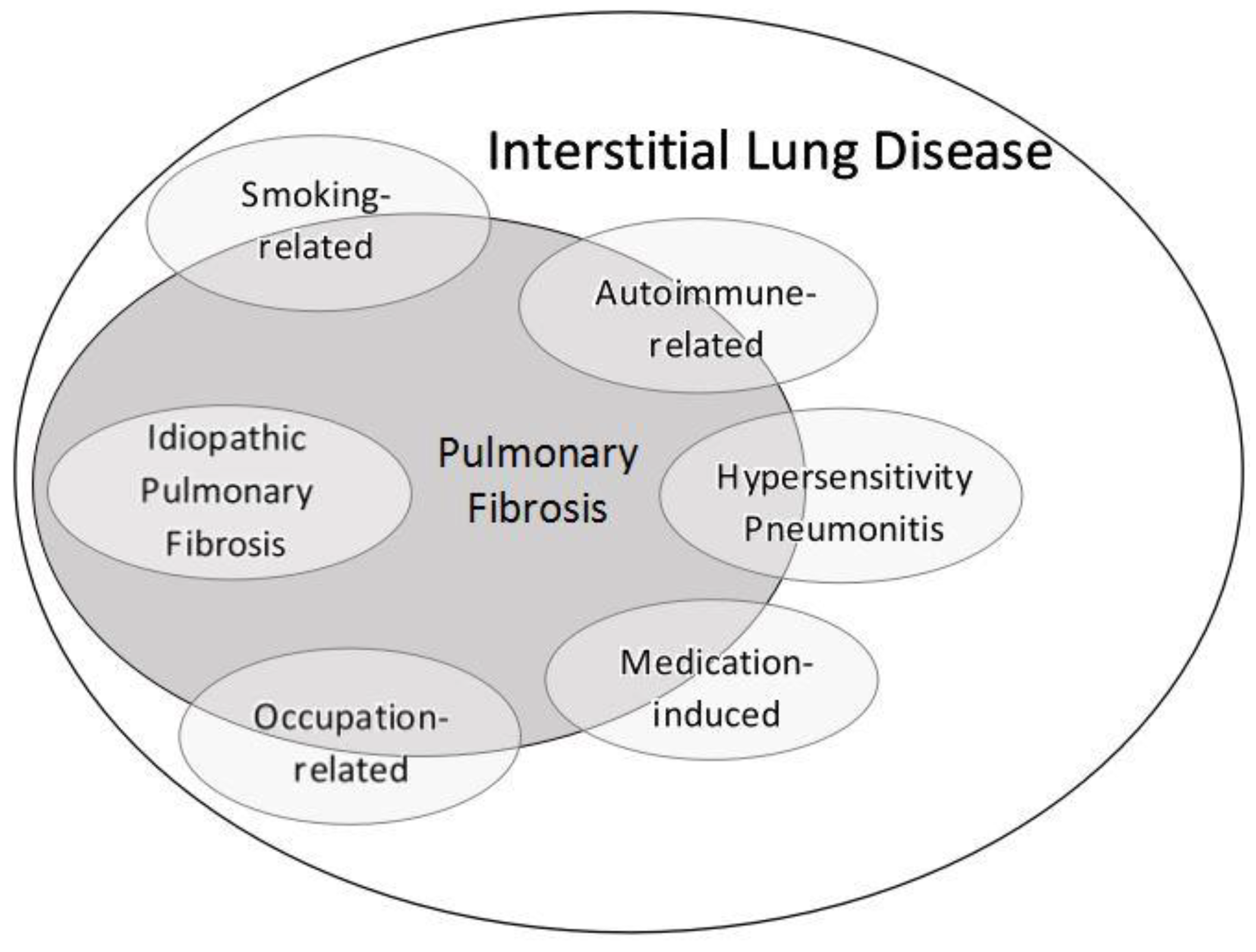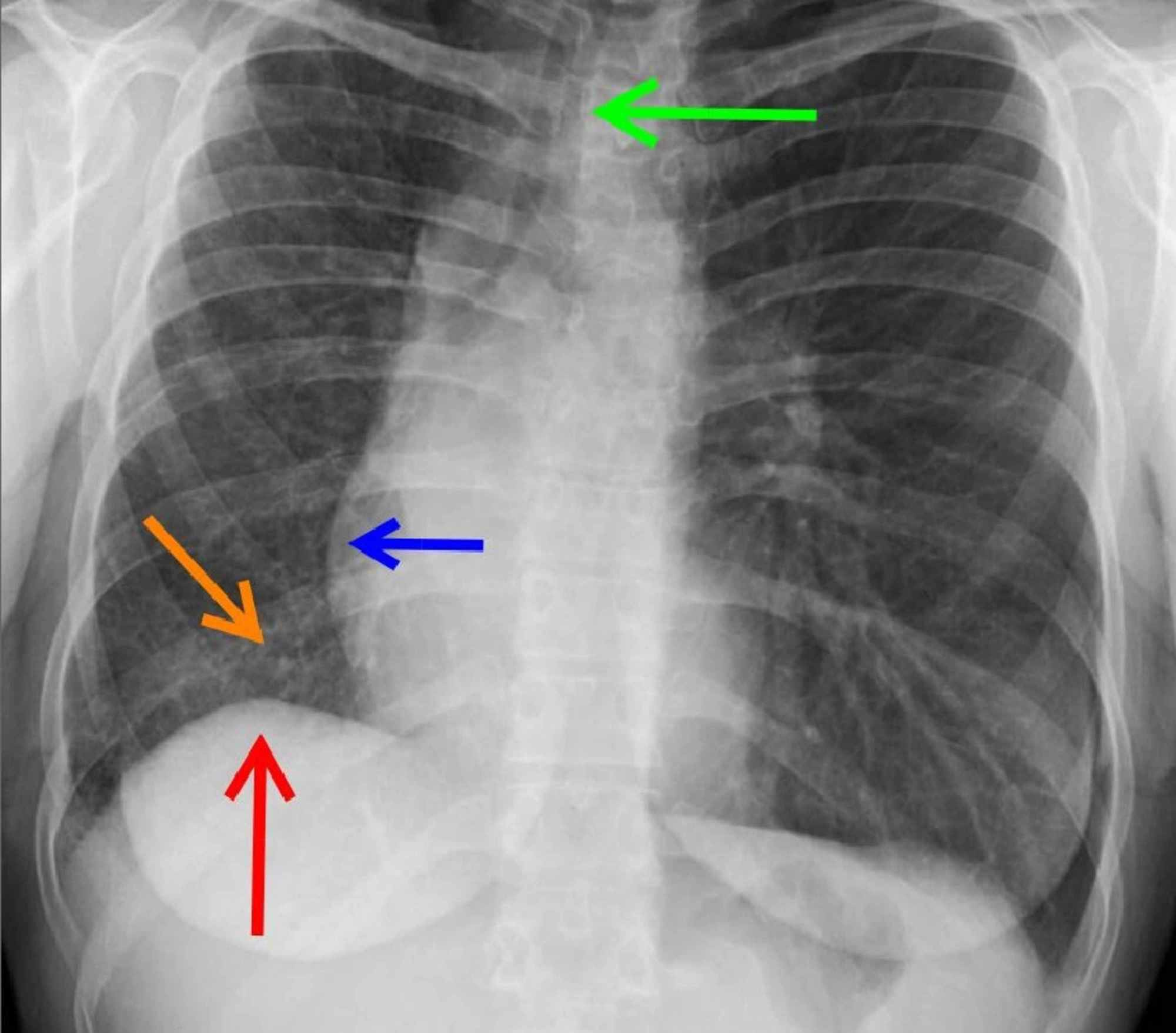Fibrosis, also known as fibrotic scarring, is a pathological wound healing in which connective tissue replaces normal parenchymal tissue to the extent that it goes unchecked, leading to considerable tissue remodelling and the formation of permanent scar tissue.[1]

In technical terms, fibrosis means thickening or scarring of the tissue. In this case, the normally thin, lacy walls of the air sacs in the lungs are no longer thin and lacy, but get thick, stiff and scarred, which is also known as fibrotic. With this scarring, the architecture of the lung gets stiffer and is less efficient in the ability to get oxygen into the blood stream. In addition, the stiffness or fibrosis of the tissue makes it more difficult to expand the lungs and breathe. It takes more energy to breathe and this additional demand of energy leads to shortness of breath with activities that were usually easier to do before. [3]

Pulmonary fibrosis is a lung disease that occurs when lung tissue becomes damaged and scarred. This thickened, stiff tissue makes it more difficult for your lungs to work properly.
Signs and symptoms of pulmonary fibrosis may include: [4]
- Shortness of breath (dyspnea)
- A dry cough
- Fatigue
- Unexplained weight loss
- Aching muscles and joints
- Widening and rounding of the tips of the fingers or toes (clubbing)
The course of pulmonary fibrosis — and the severity of symptoms — can vary considerably from person to person. Some people become ill very quickly with severe disease. Others have moderate symptoms that worsen more slowly, over months or years.[4]
Some people may experience a rapid worsening of their symptoms (acute exacerbation), such as severe shortness of breath, that may last for several days to weeks. People who have acute exacerbations may be placed on a mechanical ventilator. Doctors may also prescribe antibiotics, corticosteroid medications or other medications to treat an acute exacerbation.[4]
The term fibrosis refers to the formation of fibrous tissue that may or may not be associated with tissue healing.
Some of the different types of fibrosis include the following:
Lung fibrosis or pulmonary fibrosis
Pulmonary fibrosis may occur as a result of long standing infections such as tuberculosis or pneumonia. The condition can also be caused by exposure to occupational hazards such as coal dust or the genetic condition cystic fibrosis.
Liver fibrosis
Cirrhosis refers to the scar tissue and nodules that replace liver tissue and disrupt liver function. The condition is usually caused by alcoholism, fatty liver disease, hepatitis B or hepatitis C.

Heart fibrosis
Areas of the heart that have become damaged due to myocardial infarction may undergo fibrosis.
Mediastinal fibrosis
This form of fibrosis is characterized by calcified fibrosis of the lymph nodes, which can block respiratory channels and blood vessels.
Retroperitoneal cavity fibrosis
This refers to fibrosis of the soft tissue in the retroperitoneum, which contains the aorta, kidneys and numerous other structures.
Bone marrow fibrosis
Myelofibrosis is scarring in the bone marrow that prevents the normal production of blood cells in the bone marrow.
Skin fibrosis
Scar tissue that forms on the skin in response to injury is referred to as a keloid.
Scleroderma or systemic sclerosis
Scleroderma is an autoimmune disease of the connective tissue that primarily affects the skin but can also involve other organs such as the kidneys, heart and lungs.

Fibrosis effects eResearch by Navid Ajamin -- summer 2020
Some examples of the effects fibrosis can have on the body are given below:
- Fibrosis of the joints may lead to stiffness and pain in the knees, wrists and hips
- Fibrosis of the tendons may lead to conditions such as Dupuytren's contracture, which can cause deformity of the hands and fingers
- The shoulder capsule may be affected leading to adhesive capsulitis and frozen shoulder
- Fibrosis that involves the soft tissue of the penis is referred to as Peyronie's disease [2]
Fibrosis is defined by the overgrowth, hardening, and/or scarring of various tissues and is attributed to excess deposition of extracellular matrix components including collagen. Fibrosis is the end result of chronic inflammatory reactions induced by a variety of stimuli including persistent infections, autoimmune reactions, allergic responses, chemical insults, radiation, and tissue injury. Although current treatments for fibrotic diseases such as idiopathic pulmonary fibrosis, liver cirrhosis, systemic sclerosis, progressive kidney disease, and cardiovascular fibrosis typically target the inflammatory response, there is accumulating evidence that the mechanisms driving fibrogenesis are distinct from those regulating inflammation. In fact, some studies have suggested that ongoing inflammation is needed to reverse established and progressive fibrosis.[6]
Reference:
- en.wikipedia.org/wiki/Fibrosis
- news-medical.net/health/Types-of-Fibrosis.aspx
- lung.org/blog/7-things-know-pulmonary-fibrosis
- mayoclinic.org/diseases-conditions/pulmonary-fibrosis/symptoms-causes/syc-20353690
- med.stanford.edu/ild/patient-resources/understanding-ild.html
- pmc.ncbi.nlm.nih.gov/articles/PMC2693329


 وبلاگ تخصصی سلامت شامل مجموعه مطالب پزشکی است و اطلاعات مفیدی در رابطه با بهداشت، ایمنی، سلامتی بدن و راه های پیشگیری از بیماریها را در اختیار شما کاربر محترم می گزارد.
وبلاگ تخصصی سلامت شامل مجموعه مطالب پزشکی است و اطلاعات مفیدی در رابطه با بهداشت، ایمنی، سلامتی بدن و راه های پیشگیری از بیماریها را در اختیار شما کاربر محترم می گزارد.